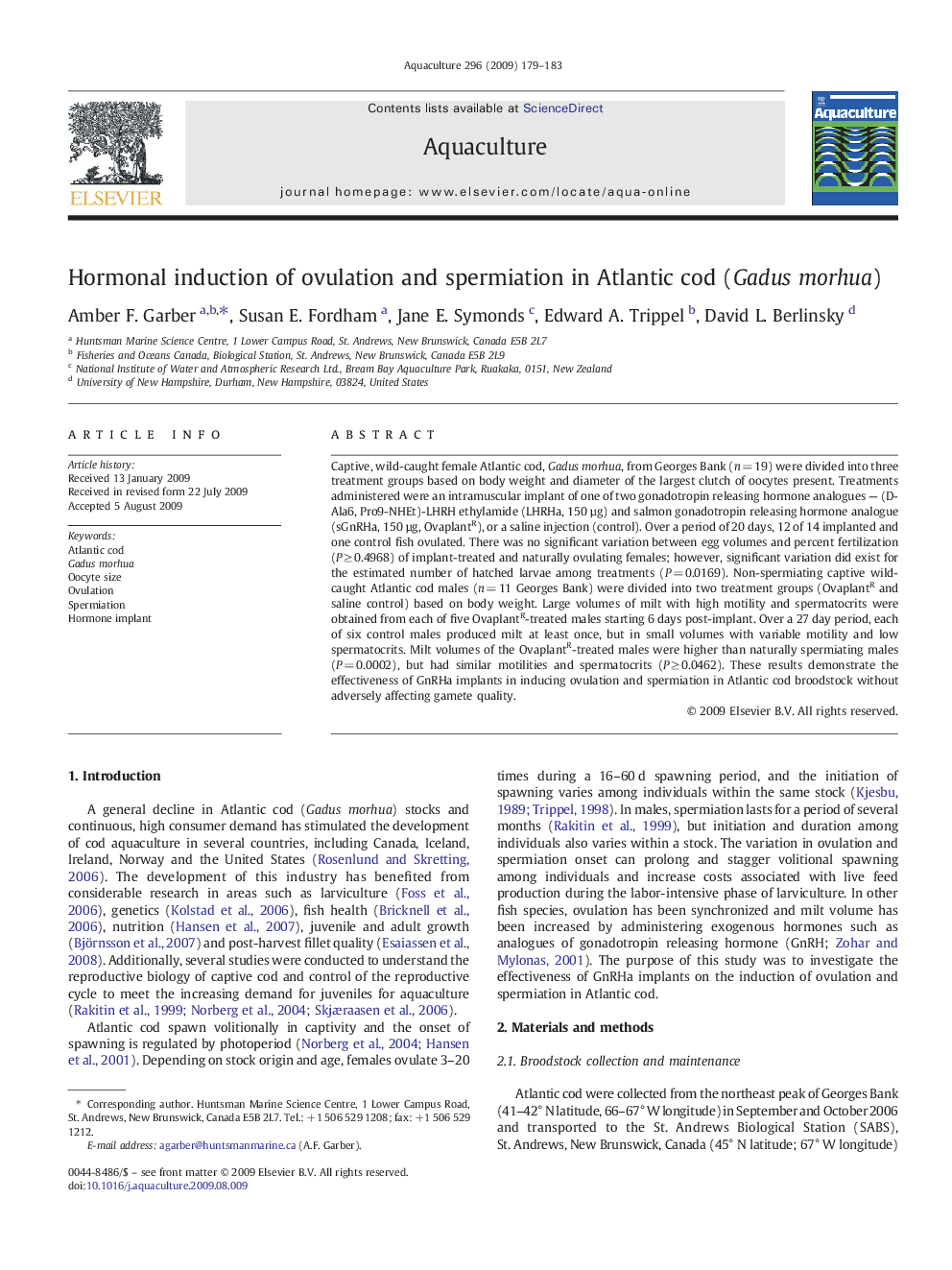| Article ID | Journal | Published Year | Pages | File Type |
|---|---|---|---|---|
| 2423899 | Aquaculture | 2009 | 5 Pages |
Captive, wild-caught female Atlantic cod, Gadus morhua, from Georges Bank (n = 19) were divided into three treatment groups based on body weight and diameter of the largest clutch of oocytes present. Treatments administered were an intramuscular implant of one of two gonadotropin releasing hormone analogues — (D-Ala6, Pro9-NHEt)-LHRH ethylamide (LHRHa, 150 µg) and salmon gonadotropin releasing hormone analogue (sGnRHa, 150 µg, OvaplantR), or a saline injection (control). Over a period of 20 days, 12 of 14 implanted and one control fish ovulated. There was no significant variation between egg volumes and percent fertilization (P ≥ 0.4968) of implant-treated and naturally ovulating females; however, significant variation did exist for the estimated number of hatched larvae among treatments (P = 0.0169). Non-spermiating captive wild-caught Atlantic cod males (n = 11 Georges Bank) were divided into two treatment groups (OvaplantR and saline control) based on body weight. Large volumes of milt with high motility and spermatocrits were obtained from each of five OvaplantR-treated males starting 6 days post-implant. Over a 27 day period, each of six control males produced milt at least once, but in small volumes with variable motility and low spermatocrits. Milt volumes of the OvaplantR-treated males were higher than naturally spermiating males (P = 0.0002), but had similar motilities and spermatocrits (P ≥ 0.0462). These results demonstrate the effectiveness of GnRHa implants in inducing ovulation and spermiation in Atlantic cod broodstock without adversely affecting gamete quality.
